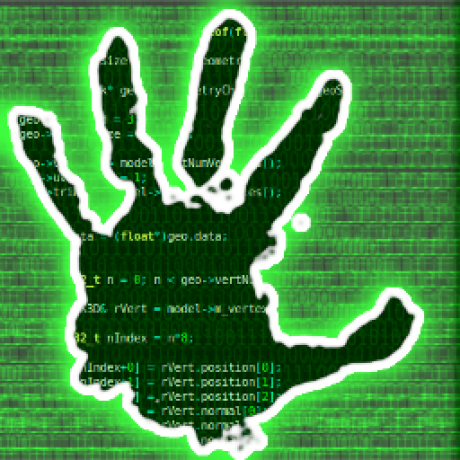I have had to spend so much more time thinking about drivers on Windows than on Linux it’s not even funny
And what are Nvidia users supposed to do?
I have never had problems with Nvidia drivers on Linux mint detects them and ask if you want to install the official drivers
LMDE didn’t install the DKMS modules on my kid’s PC, so the nVidia drivers never loaded after a new kernel got installed. I do enough tech support at work so we chucked Pop!_OS on the PC (and set it up with btrfs and timeshift-autosnap) instead. No more problems.
May not be a problem with mainline Mint, of course, but there are weirdos like me who prefer the Debian edition.
I don’t know how Linux users are using Windows but whenever I see comments like these I’m surprised they aren’t using OSX or a tablet instead of a computer by now because they clearly don’t know what they’re doing…
The problem is maintaining the os. Installing the drivers on windows is usually fine. Maintaining them is frustrating, because of how updates has to be done, and the dirty uninstall process, and the issues.
On many Linux distro it doesn’t work perfectly, but maintenance is so trivial that people become used to it. And going back to a high maintenance OS is annoying. Like going back from a modern EV to ford model T. Some people like the experience of going back in time to the mid 90s with Windows, other prefer the simplicity of maintaining a Linux OS
I dont get it, can you provide some examples please? I installed windows 10 like 2 years ago on my “new” laptop. I have installed all drivers from my external hardrive. Since then I havent done anything related to drivers ever. If I plug something in, like an external screen, controller, mouse, headphones whatever, it installs itself automatically and just works. I havent done any maintenance either, except I will dust it off every other month or so. And thats pretty much the same with every PC I ever owned. What OS maintenance am I supposed to be doing? I sometimes do registry cleanup and disk defrags, but I thinks those are just placebos :D
There no real control of what and how you installed stuff. This create long term issues. This is why you perform registry clean up. But it is not enough, because of orphaned and conflicting dlls, inconsistent installation paths, conflicting versions. You probably don’t see just because you are used to the issues and you think that’s how things work.
If you install a better os, everything is accurately and centrally managed, making maintenance much more easy. Problem is with closed sourced software and drivers, because they break the normal processes of installation and maintenance, creating similar issues as in windows (not as bad because the os is better engineered)…
I’ve never done any registry cleanup for years now, ever since I know better than to think Windows need any of that. How many years ago have you used Windows? You’re like that Windows user that keeps telling people you can’t game on Linux. It’s old news by now.
I unfortunately have to deal with it daily at work… With a premium laptop that cost thousands, and it is extremely less performant than much smaller and older machines with linux (I use linux at work as well).
I am not saying anything controversial. It is literally the reason why windows professionally is used for accountants, but it is practically never used for tasks that require performances, reliability, stability and long term maintainability.
Most casual users live with these issues, many move to mac, few move to linux. Victims of corporate IT like me must justify the budget to avoid the standard laptop and get the overpriced piece of extremely powerful hardware to have a daily experience slightly better than a raspberry pi running on respbian. Because outlook…
I am using a Netbook from 2009, Atom N570 1666Mhz, 2Gbyte RAM, 120GByte SSD. It is 550 gramm light, is so small it fits into the interior pocket of my jacket, runs eight hours on battery. And everything runs okeyish on it except maybe Youtube-Videos inside Firefox. So I set Firefox to start Youtube-Videos in VLC. Now I can even watch Youtube on my rusty old Netbook.
Worst problem: 32Bit support is running thin nowadays. It could run 64Bit but on that old system that actually costs quite some performance.
Ah yes, windows where I have to somehow figure out how to install the drivers for my network adapter before I can actually connect to the internet, on top of having to go to a different website for each device that needs a driver to find the correct one, download it and install it.
Vs Linux, where network (and most essential) drivers are baked into the kernel, and all other drivers (for peripherals, etc) can be had via a package manager, where you can often find free and open source solutions. Also, video drivers are automatically installed with the OS (provided you are using a distro with a proper graphical installer for ease of use, cough use Endeavour cough), and automatically updated when the system is updated.
Sounds like you clearly haven’t used Windows in over a decade, or even close to two.
I haven’t had to install a network driver since Windows XP. Even then it had drivers for most cards built in.
When I last installed Windows I had to google where do download Libreoffice, Firefox, Steam, Audacity, VLC, Gimp and a lot more software.
On Linux most came preinstalled, the rest was one click in the Repository (“Store” for Generation Smartphone)
When I last installed Windows I had to google where do download […] On Linux most came preinstalled
You can’t have it both ways.
On one day, you complain about all the so called “bloatware” that’s preinstalled on Windows (more “pre-linked” and easily installed, and these “links” are easily deleted).
The next day, you complain that the specific subset of software you want to use is not preinstalled on Windows.
Lastly, the way you go about finding where to get your software, that’s more of a philosophical question. Do I want someone else to curate a list of available software, or do I want to visit the publisher’s website and get it directly from the source?
At least on Debian/Ubuntu I can use tasksel to select a useful preset of packages right while installing. Base is just a text mode shell with minimal command line tools, Server has some Network Stuff, LXQT, Gnome and so on… for the total N00b it is fine to default to KDE or Gnome, I prefer LXQT though. And tbh, I think Firefox, Libreoffice and VLC are useful preinstall in nearly every use case while the usual stuff on Windows is pretty useless (Another Antivirus? Really? A trial version of a paint programm inferior to Gimp 1.0? Office 365?)
What on earth are you guys doing having to search the internet for drivers for Linux??? You not buy things that have Linux support advertised? Not looking for good reviews by other Linux users?
I once needed the driver to use “Floppy Streamers” under Linux. That is plain impossible with Windows. For Linux it just meant to recompile the kernel-module each time you updated the kernel which basically was “make && make install”. Then at accessing /dev/qic-nst0 I had a Floppy Streamer.
Yes, sometimes you need drivers under Linux. But it is VERY rare.
How do you even search for drivers in Linux? I thought this was a windows only thing
You need to if your device isn’t officially supported. This is pretty common for USB wifi cards.
There’s a DB of officially supported cards , and if your card isn’t there then you have to look up for a driver.
Usually they’re fairly easy to find with just googling.
On one side it is a rare sight to need to install a driver for Linux. I had an Star NL24-10 printer with an IEEE-488 connector for the C64.
INSANE! Linux natively supports C64 peripherals.
I build a simple adaptor from Parallel to IEEE-488-Serial and when I told CUPS the printer was on /dev/ieee488 it immediately found it. Insane. Oh, the Floppy was also available, at least at sector Level though there actually is no C1541 Filesystem so I had to open it in Starcommander, some sort of Norton/Midnite-Commander, which officially supports those images.
The amount of supported hardware is INSANE. You will get stuff working which works nowhere else.
The coolest shit are Host-Based Storage Systems, with the most known group as Memory-Technology-Devices. For example there are SMR-Harddisks where I can change the SMR-Layout from my computer. I can say “50% capacity CMR, 50% SMR”. Or Host-Based-QLC-Drives where you can select for each MinWriteCell how to use it: As ultra-Fast SLC/MLC, as the middle TLC or as the superslow QLC. Sure, it costs Capacity. But the choice ist yours. I bought a Data-Center-Intel-QLC-Drive and converted it to 50% MLC at 3.5GByte/s sustained and 50% QLC with 0.5Gbyte/s. Sure, it reduced the capacity of the 4TByte Drive to 3TByte. But who cares if it is so fast it blows anything away. On Windows you can not even detect those drives.
But: If you have a really bad case of “unsupported hardware” then things get complicated fast.
What do you use to manage SSD/HDD management like that? I just reinstalled Arch and would love to mess with this.
Beware: Those MTD-Stuff does NOT work with consumer stuff. Highend-MTD is practically not existing for consumers because Windows doesn’t support them anyway.
If you check the Linux Kernel Frontend you’ll find a section about “MTD devices”. There are some userspace programs listed for managing the kernel components. Those tools are somewhat good for Host Based SMR hard drives but you might need tools to unlock the drives which I didn’t need because they got unlocked at work. Those HDs are only sold to data centers. The two I have at home are from work and it is a miracle they let me have them at all.
Flash based MTD though is sometimes available but not in normal computing. Because SATA, NVMe, eMMC are actually “to advanced” for that stuff. MTD is VERY Low-Level. The driver does everything, buffering, moving from MLC to QLC, refreshing cells and so on. For me it is a PCIE-Card with absolutely no intelligence but a very fat driver. But you might also find it in old Linux/Android-Based phones, Netbooks and Tablets though current smart phones use “smarter” storage like eMMC. Iphones have MTD but you can not get Linux to run on them.
Very interesting, thanks for the info. I may have to piece together an ebay server to mess around with some of it.
Good Luck. I haven’t seen those drive ANYWHERE outside Amazon and Microsoft backend Systems. Technically speaking they weren’t even from “Servers” but from “SAN” systems.







